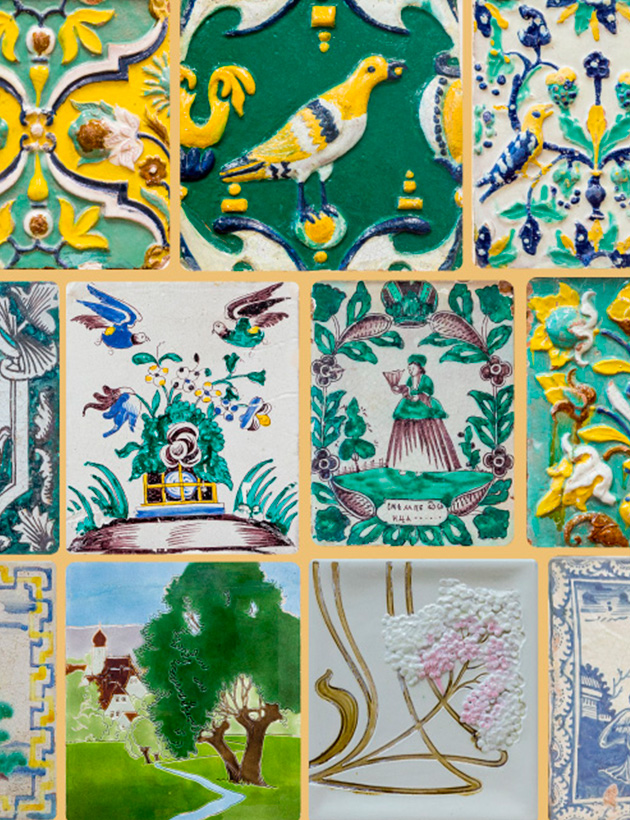Exhibitions
6+Open storage. Stoves and tiles
Izmailovo
Bldg 4, 2 Gorodok imeni Baumana, South building
The collection of glazed tiles of the Moscow State Integrated Museum-Reserve “Kolomenskoe – Izmailovo” is considered one of the largest in Russia. In the permanent exhibition of the Izmailovo estate, you will find the finest part of the collection of XVII – early XX centuries.
The exhibition not only introduces a new layer of museum objects usually hidden in storage, into public access, but also allows you to trace the development of trends, stylistic changes, tile structure as well as the use of architectural ceramics in historical monuments.
The exhibition is located at the Izmailovo estate near the Intercession Cathedral. The tiled decor of the cathedral was made by the best masters of the second half of XVII century – Ignat Maksimov and Stepan Ivanov nicknamed the Half-Devil.
The exhibition displays numerous ceramic products of XVII century, which is rightfully considered the golden age of Russian tile art.
The architectural style of this time is often called the “Moscow pattern”. At that time, the bright and multicolored Moscow tiles appear on churches and bell towers as well as on stoves made a vital part of the Russian interior.
For open storage, unique ceramic icons attributed to the master Stepan Ivanov Demi-Demon were brought from the Museum-Reserve collection: four ceramic figures of Evangelists from St. Daniel Monastery cathedral and a figure of St. Mathew the Evangelist from the non-extant Church of Archdeacon Stephen beyond the Yauza River.
The XVIII century is represented by stove painted tiles. In Russia, their production was established by order of Tsar Peter I. The plots on the tiles illustrate different aspects of the Russian society life.
Ceramic tile. 1927. Clay, white enamel, blue enamel, molding, painting, firing. Moscow State Integrated Museum-Reserve collection.
‘Peacock’ ceramic panel. 1950s. Clay, colored enamel, molding, painting, firing. Moscow State Integrated Museum-Reserve collection.
Narrative tiles panel with an inscription. Mid-XVIII c. Red clay, colored enamel; painting, firing. Moscow State Integrated Museum-Reserve collection.
Stepan Ivanov (the Half-Devil). Evangelist John. Second half of XVII c. Clay, colored enamel, molding, painting, firing. Moscow State Integrated Museum-Reserve collection.
Ceramic tile. 1927. Clay, white enamel, blue enamel, molding, painting, firing. Moscow State Integrated Museum-Reserve collection.
‘Peacock’ ceramic panel. 1950s. Clay, colored enamel, molding, painting, firing. Moscow State Integrated Museum-Reserve collection.
Narrative tiles panel with an inscription. Mid-XVIII c. Red clay, colored enamel; painting, firing. Moscow State Integrated Museum-Reserve collection.
Stepan Ivanov (the Half-Devil). Evangelist John. Second half of XVII c. Clay, colored enamel, molding, painting, firing. Moscow State Integrated Museum-Reserve collection.
Ceramic tile. 1927. Clay, white enamel, blue enamel, molding, painting, firing. Moscow State Integrated Museum-Reserve collection.
‘Peacock’ ceramic panel. 1950s. Clay, colored enamel, molding, painting, firing. Moscow State Integrated Museum-Reserve collection.
Narrative tiles panel with an inscription. Mid-XVIII c. Red clay, colored enamel; painting, firing. Moscow State Integrated Museum-Reserve collection.
Stepan Ivanov (the Half-Devil). Evangelist John. Second half of XVII c. Clay, colored enamel, molding, painting, firing. Moscow State Integrated Museum-Reserve collection.
In the XIX century, Russia saw the genesis and flourishing of ceramic manufacturing. The gems of the museum collection of that period are unique ceramic panels made at the factory of M.S. Kuznetsov.
Fireplaces and stoves of German and Finnish production are worthy of separate attention. They decorated Moscow mansions and tenement buildings in the second half of XIX century.
The unique ceramic tiles collection of the Moscow State Integrated Museum-Reserve “Kolomenskoe – Izmailovo” counts about 16,000 items and gives us the opportunity to trace the entire Moscow tile history starting from XV century terracotta stove tiles and ending by artworks of the USSR period in the XX century. Most of the exhibition is devoted to the Moscow tile, because it was Moscow that defined the tile fashion.
First ceramic works appeared in the Kolomenskoe collection in 1925 thanks to the efforts of the founder and first director of the museum, Pyotr Baranovsky. He not only understood the place and role of glazed tiles in Russian culture, but sincerely loved and admired this art.
To highlight the relevance of tile art in the XXI century, the Museum-Reserve designers have prepared a set of stickers in the Telegram “Keramodji”, which is made on the basis of tiles from the middle of the XVIII century.